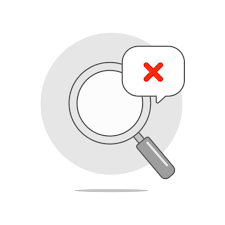EPFO Employer Login 2025
Streamline your EPFO procedures effortlessly with our employer login portal. Manage PF contributions, employee details, and compliance seamlessly. Avail simplified access and ease your administrative tasks today.
EPFO (Employees’ Provident Fund Organization) is a statutory body in India set up in 1952 that manages and oversees the Employees’ Provident Fund (EPF), a social security scheme for salaried employees. It was conceived under the Employees’ Provident Fund and Miscellaneous Provisions Act, 1952.
Both the employer and the employee contribute 12% of the employee’s salary to the EPF. A part of this (8.33%) goes to the Employee Pension Scheme, and the rest to the PF account.
Employers need an EPFO login to manage employee profiles, make contributions, ensure regulatory compliance, and facilitate benefits.
Steps for EPFO Employer Registration Process
To initiate your EPFO Employer Login journey, follow these steps:
- Visit the EPFO portal and select the ‘Employer’ section.
- Register using required company details like establishment ID, PAN, etc.
- Validate your registration through the provided OTP.
- Create a username and password for future access.
Steps for EPFO Employer Login
- Visit https://unifiedportal-emp.epfindia.gov.in/epfo/#
- Click on Employer Sign In option.
- Enter the username and password and click on Submit.
- If the user has forgotten the password, they can reset it using the Forgot Password option.
- The user will then be redirected to the main page of the employer’s EPFO portal, where they can approve employee actions.
Why is it Important for Employers to Register for EPF?
EPF registration is essential for employers for the following reasons:
- TDS Compliance: Similar to how TDS is deducted from salaries, EPF registration is a necessary process. Remittances can only be processed after the employer generates a challan through the EPFO portal.
- Risk Coverage: Covers financial risks such as death, illness, and retirement of employees.
- Transferable: The PF account is unique and can be transferred across jobs.
- Employee Pension Scheme: 8.33% of up to ₹15,000 from the employer’s contribution goes toward pension benefits after age 58.
- Emergency Needs: Funds in the EPF corpus can be used during emergencies.
- Long-Term Goals: Funds can be utilized for goals such as marriage, education, or home construction.
Applicability of EPF Registration
EPF registration is mandatory for establishments:
- Employing 20 or more persons.
- Falling under classes notified by the central government even if employing less than 20 persons.
- Employers must register within one month of reaching the applicable employee strength or face penalties.
- The central government may also mandate registration for smaller establishments with two months’ notice.
Why EPFO Login for Employers is Important
Employers can:
- Register new companies or establishments.
- Make ECR challan payments.
- Create new EPF accounts for employees.
- Approve EPF claims easily.
- Make online contributions to employees’ PF fund.
- Check contribution details or balance through the portal.
FAQ
1. Why Should Employers Register for EPF?
It is mandatory for employers to register with the Employees’ Provident Fund Organisation (EPFO) to fulfill their statutory obligations. Employers are required to make monthly remittances only after generating challans from the EPFO portal. Non-registration can lead to penalties and legal consequences under the EPF Act.
2. What Is Excluded from Wages Under PF?
Certain components of an employee’s remuneration are excluded from PF wage calculations. These include:
- Bonus
- Food allowance
- Incentives
- Overtime/Performance allowance
- House Rent Allowance (HRA)
Only the basic wages and dearness allowance (if applicable) are considered for EPF contributions.
3. What Is the Percentage of Employer and Employee Contribution to EPF?
Both the employer and employee contribute 12% of the employee’s monthly basic salary to the EPF.
- Employee Contribution: 12% goes directly into the EPF account.
- Employer Contribution:
- 8.33% is allocated to the Employee Pension Scheme (EPS)
- 3.67% goes to the employee’s EPF account






